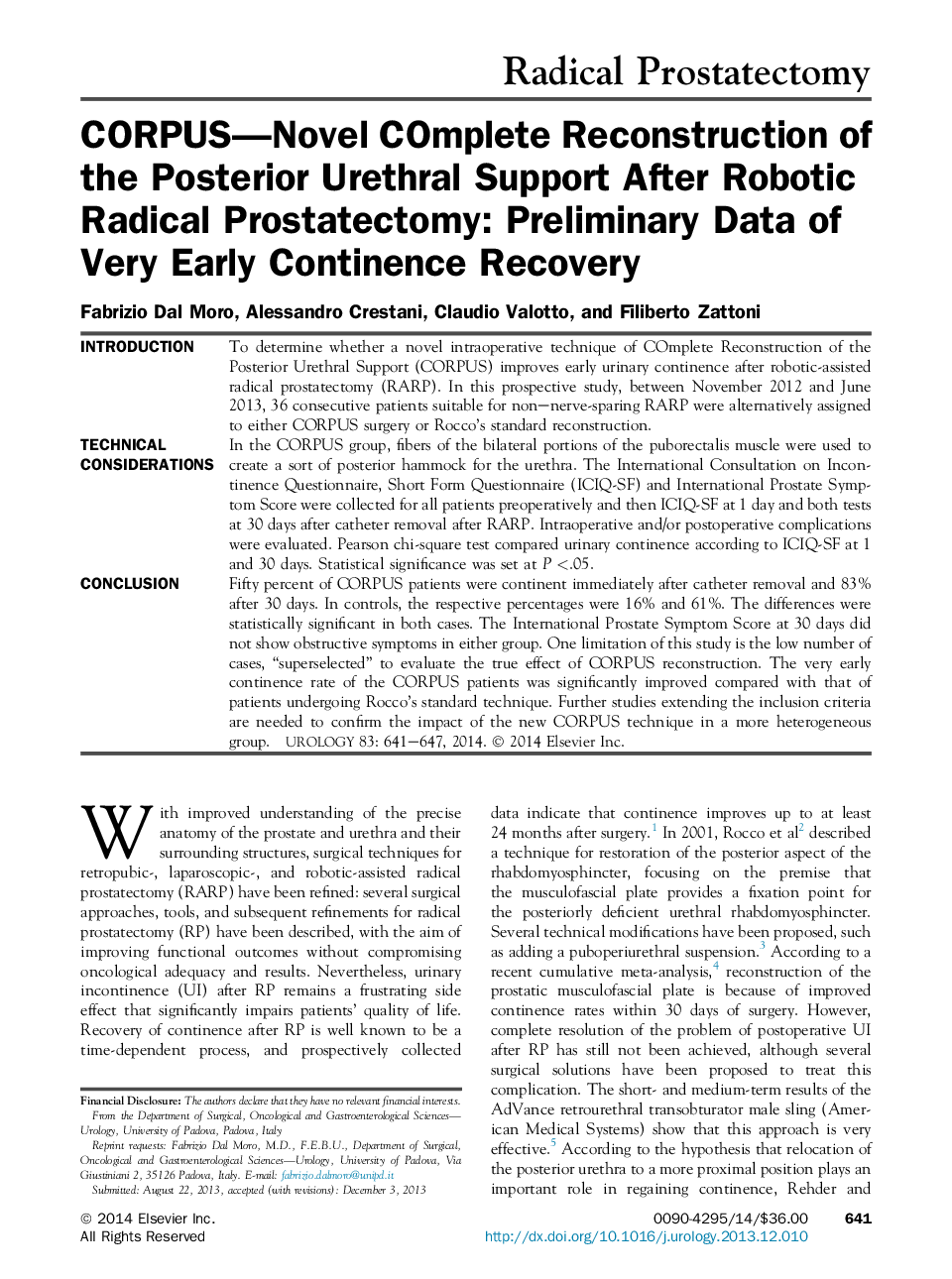| Article ID | Journal | Published Year | Pages | File Type |
|---|---|---|---|---|
| 3900254 | Urology | 2014 | 7 Pages |
IntroductionTo determine whether a novel intraoperative technique of COmplete Reconstruction of the Posterior Urethral Support (CORPUS) improves early urinary continence after robotic-assisted radical prostatectomy (RARP). In this prospective study, between November 2012 and June 2013, 36 consecutive patients suitable for non–nerve-sparing RARP were alternatively assigned to either CORPUS surgery or Rocco's standard reconstruction.Technical ConsiderationsIn the CORPUS group, fibers of the bilateral portions of the puborectalis muscle were used to create a sort of posterior hammock for the urethra. The International Consultation on Incontinence Questionnaire, Short Form Questionnaire (ICIQ-SF) and International Prostate Symptom Score were collected for all patients preoperatively and then ICIQ-SF at 1 day and both tests at 30 days after catheter removal after RARP. Intraoperative and/or postoperative complications were evaluated. Pearson chi-square test compared urinary continence according to ICIQ-SF at 1 and 30 days. Statistical significance was set at P <.05.ConclusionFifty percent of CORPUS patients were continent immediately after catheter removal and 83% after 30 days. In controls, the respective percentages were 16% and 61%. The differences were statistically significant in both cases. The International Prostate Symptom Score at 30 days did not show obstructive symptoms in either group. One limitation of this study is the low number of cases, “superselected” to evaluate the true effect of CORPUS reconstruction. The very early continence rate of the CORPUS patients was significantly improved compared with that of patients undergoing Rocco's standard technique. Further studies extending the inclusion criteria are needed to confirm the impact of the new CORPUS technique in a more heterogeneous group.
